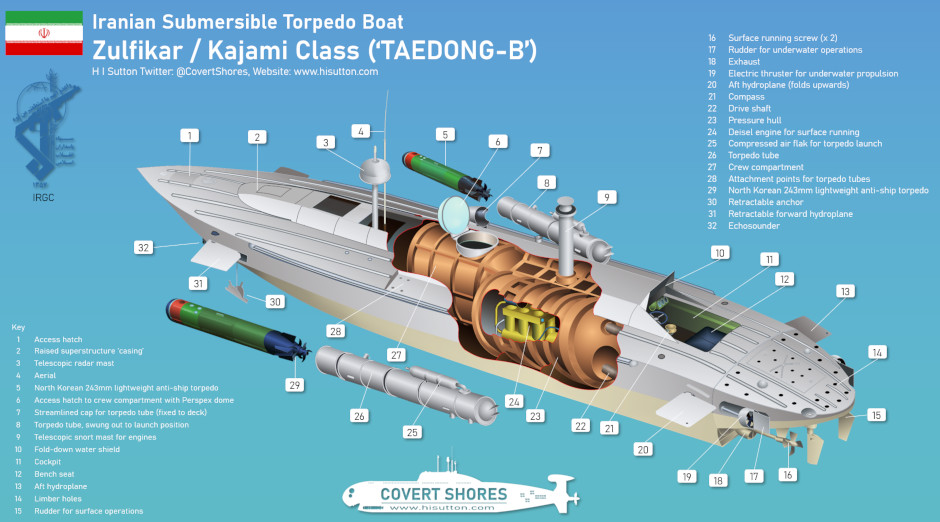Iran's 'Zulfikar' Submersible Torpedo Boat
 Iran's submersible torpedo boats represent a serious threat to shipping in the confined waters of the Persian Gulf and, potentially, Red Sea. They would be ambush predators, able to operate from any small port, and surprise ships in natural chokepoints. This would have a greater chance of surprising their target than surface vessels or aerial drones (UAVs).
Iran's submersible torpedo boats represent a serious threat to shipping in the confined waters of the Persian Gulf and, potentially, Red Sea. They would be ambush predators, able to operate from any small port, and surprise ships in natural chokepoints. This would have a greater chance of surprising their target than surface vessels or aerial drones (UAVs).
These unique vessels, designed in North Korea, represent an unusual and difficult to counter threat. They are inherently better suited to supply to the Houthi Movement in Yemen than midget submarines. They would be easier to hide, to launch, and require much less training to operate. Their presence in the Red Sea is unconfirmed however.

I originally interpreted these to be Special Operations assets intended as a form of swimmer delivery vehicle. This would be consistent with related types in North Korean and Vietnamese service. In that role the torpedoes would be for self-defense. However I now view them more as submersible torpedo boats intended to sink ships with torpedoes.
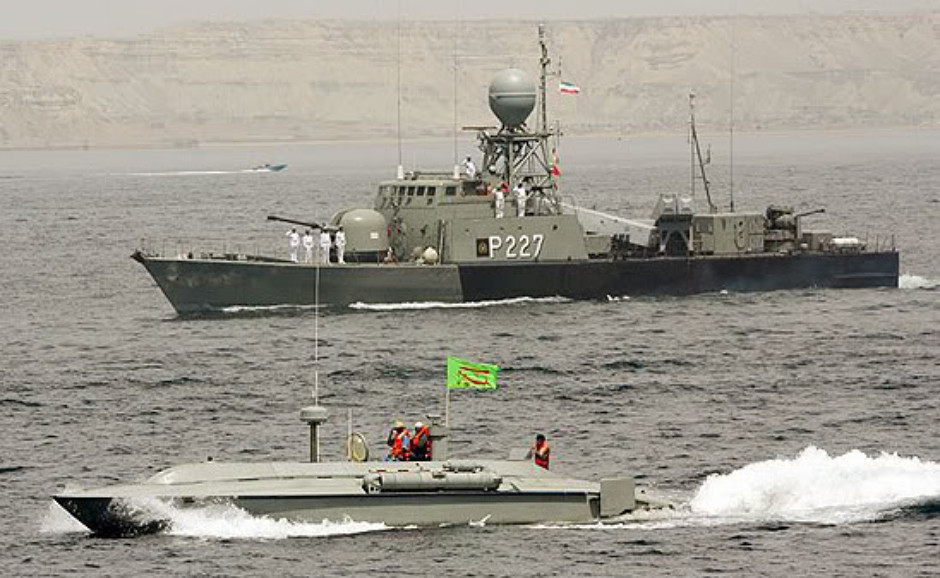
The TAEDONG-B / Kajami during Iranian exercises, soon after delivery
The intelligence community designation 'Taedong-B' refers to a boatyard in North Korea where the craft were built(Google Maps). Two examples formed part of an arms shipment sent to Iran in 2002. In Iranian service it was renamed the Kajami Class, and more recently as Zulfikar. Interestingly the type is operated by the Revolutionary Guards (IRGC-N) as opposed to the Marines or Navy.
Iranian media and internet claims that it is of Iranian origin are plainly mistaken. The design is closely related to the North Korean Improved Submersible Infiltration Landing Craft (I-SILC) operated by North Korea and Vietnam. The I-SILC is a gradual evolution of small infiltration craft used to run agents into South Korea. Early designs were simply fast launches disguised as fishing boats, but by the 1980s some versions were semi-submersible. By the 1990s they were fully submersible but could not run underwater. The underwater mode was used only for evasion, waiting inshore, and as a cache.
In a lesson learned from a 1996 incident off the South Korean coast when an I-SILC was sunk 150 kilometers southwest of Pusan, the newer models use electric propulsion to move while submerged. To simplify construction and electric propulsion uses separate propellers to the main diesel engines. The thrusters are not steerable but small rudders are mounted directly behind them.
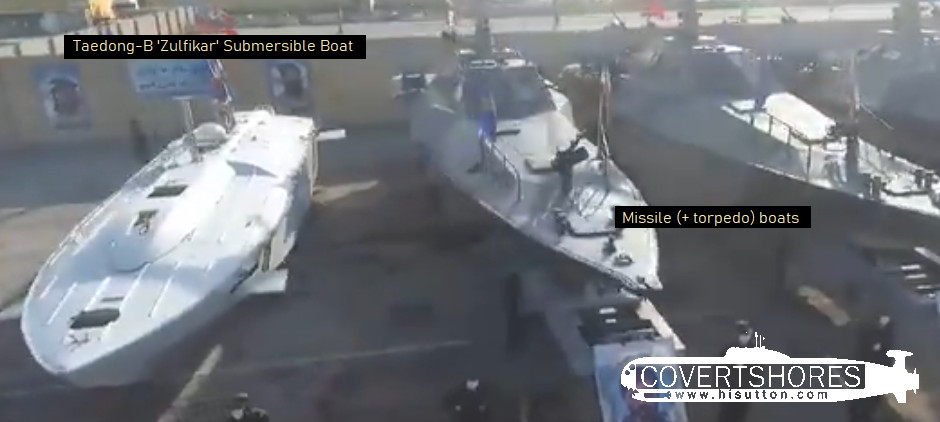
Zulfikar/Taedong-B on display, February 2021. Note the absence of torpedo tubes, but possibly enlarged fuel tanks instead.
Specification (Provisional)
Length: 17m (56ft)
Beam: 3.3m (11ft)
Height: 3.5m (11.5)
Displacement: 22 tons
Speed: 40kt max surfaced, ~3kt submerged
Endurance: TBC -modest
Maximum Operating depth: 3m (10ft) with snorkel, 20m (66ft) max (estimate based on I-SILC)
Personnel: Up to 8 (4x crew, 4 passengers), but likely fewer on missions
Payload: 2 x 324mm (12.7") lightweight anti-ship torpedoes.
Powerplant: 2 x diesel engines (details TBC) plus two electric motors
Sensors: Basic Electro-optical (video), basic surface search / navigation radar, echosounder
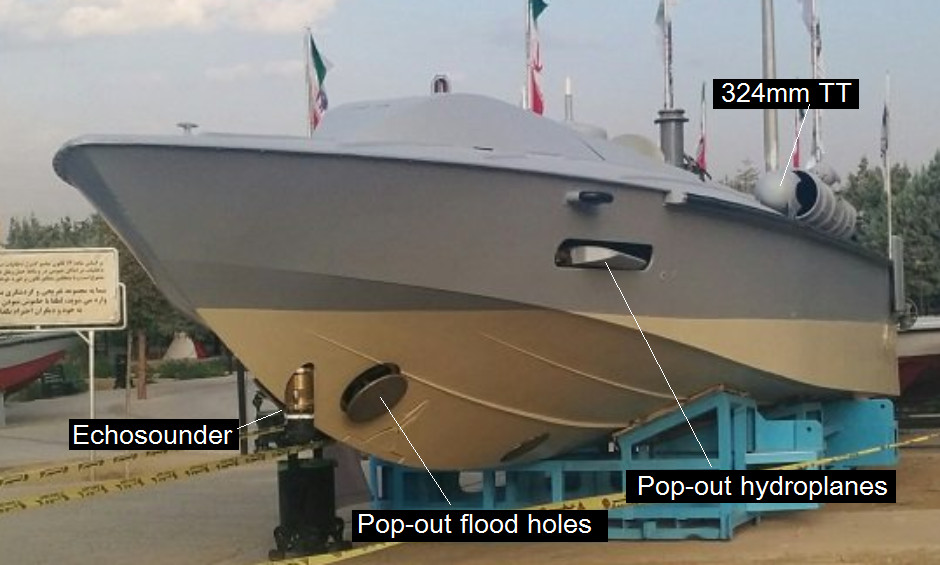
Torpedo Armament
The vessel is armed with two externally mounted North Korean 324mm (12.7") lightweight torpedo tubes. These homing torpedoes are intended as anti-ship weapons. They swing out to launch and have compressed air flasks for impulse launch.
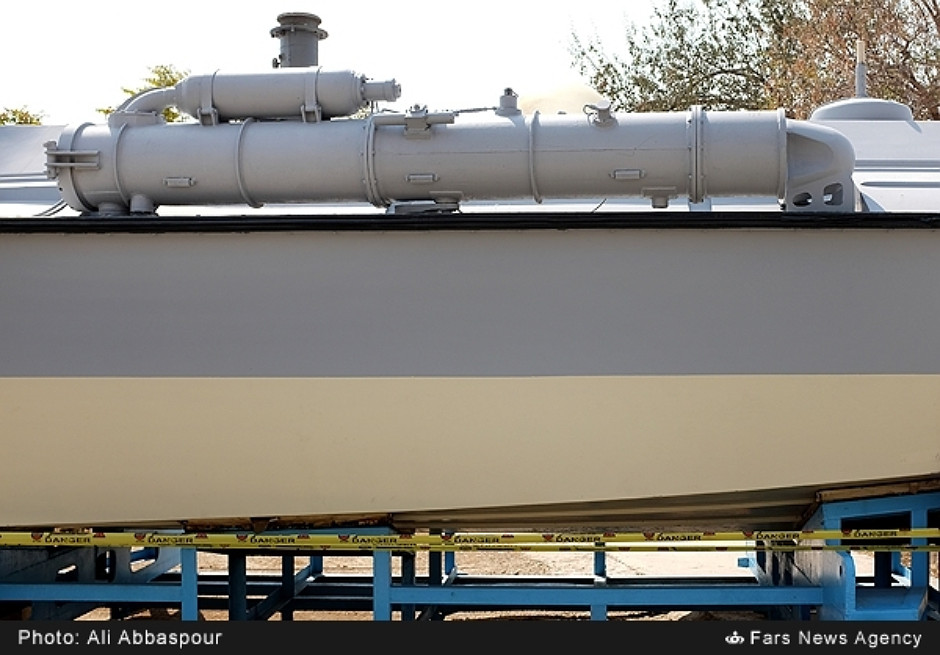
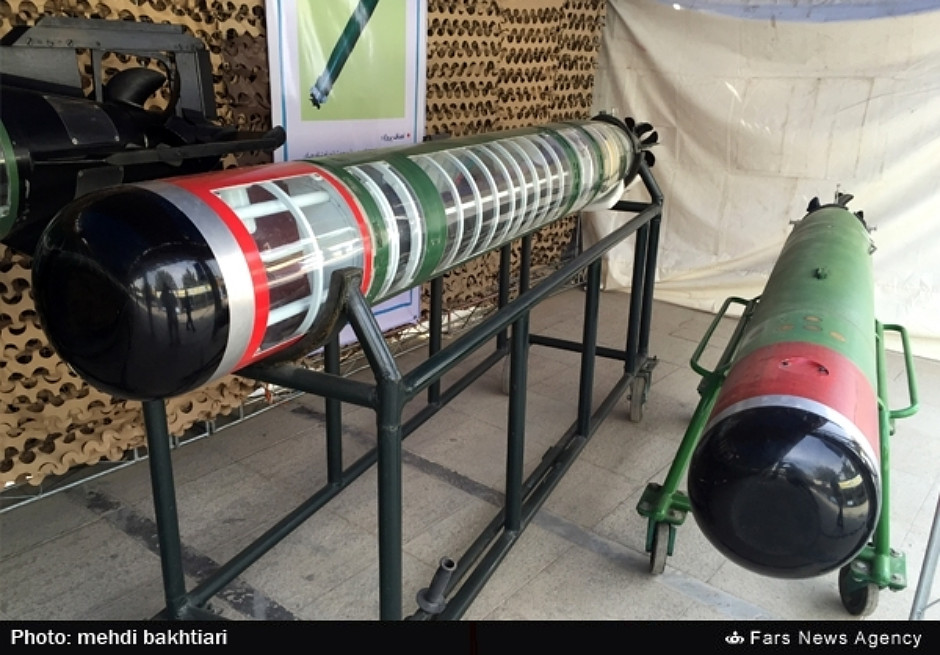
Related articles (Full index of popular Covert Shores articles)

 Houthi's Blowfish: Guide To Explosive USV Threat Off Yemen
Houthi's Blowfish: Guide To Explosive USV Threat Off Yemen

 Ukraine's Maritime Drones (USVs)
Ukraine's Maritime Drones (USVs)

 Nerpa anti-diver UUV
Nerpa anti-diver UUV
 Explosive Boats world history
Explosive Boats world history

 Iranian Fateh Class submarine w/Cutaway
Iranian Fateh Class submarine w/Cutaway


